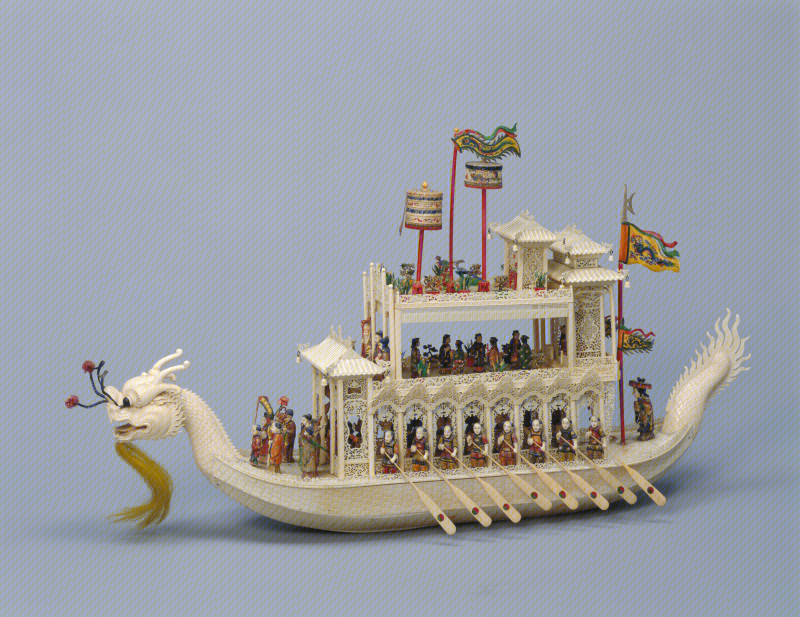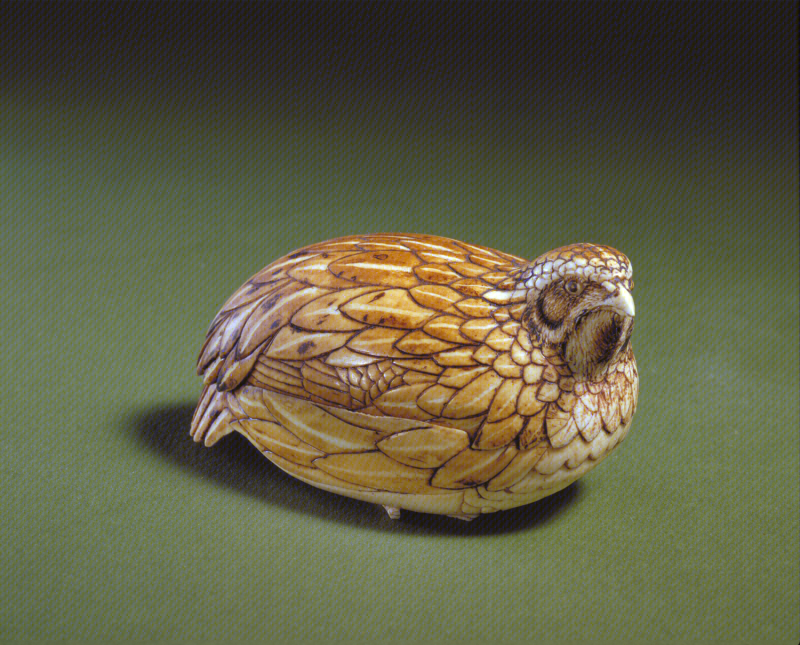
Openwork Ivory Dragon Boat with Gathered Immortals Celebrating Longevity
Period: Qing dynasty (1644–1911)
Medium: ivory
Dimensions: height: 58 cm, length: 91.5 cm, width: 23.5 cm
This boat is fashioned as a dragon with a raised tail and upturned tail. The central pavilion has three tiers; the upper tier has flags and canopies with dragon and phoenix motifs. The middle tier is a broad platform, and the lower tier serves as a cabin. The architectural features and embellishments of each tier are ingeniously carved with delicate cuts of the engraver’s knife visible in the openwork designs. The boating party features the Queen Mother of the West, the Eight Immortals, and the Three Stars (i.e., three deities called Fortune, Longevity, and Emolument), and various heavenly maidens. Including the boatmen and musicians, the total number of figures on the boat is forty-two.
The dragon boat was presented as tribute by grand ministers of the Imperial Household Department to Empress Dowager Cixi (







